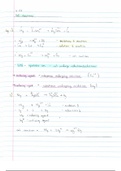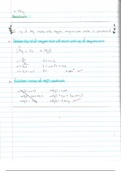Package deal
Grade 12 Chemistry Summaries
Included are all sections of chemistry covered in grade 12 IEB summarised with some sections covered in grade 11 which help understand the grade 12 work. Example questions and answers are included.
[Show more]



























































